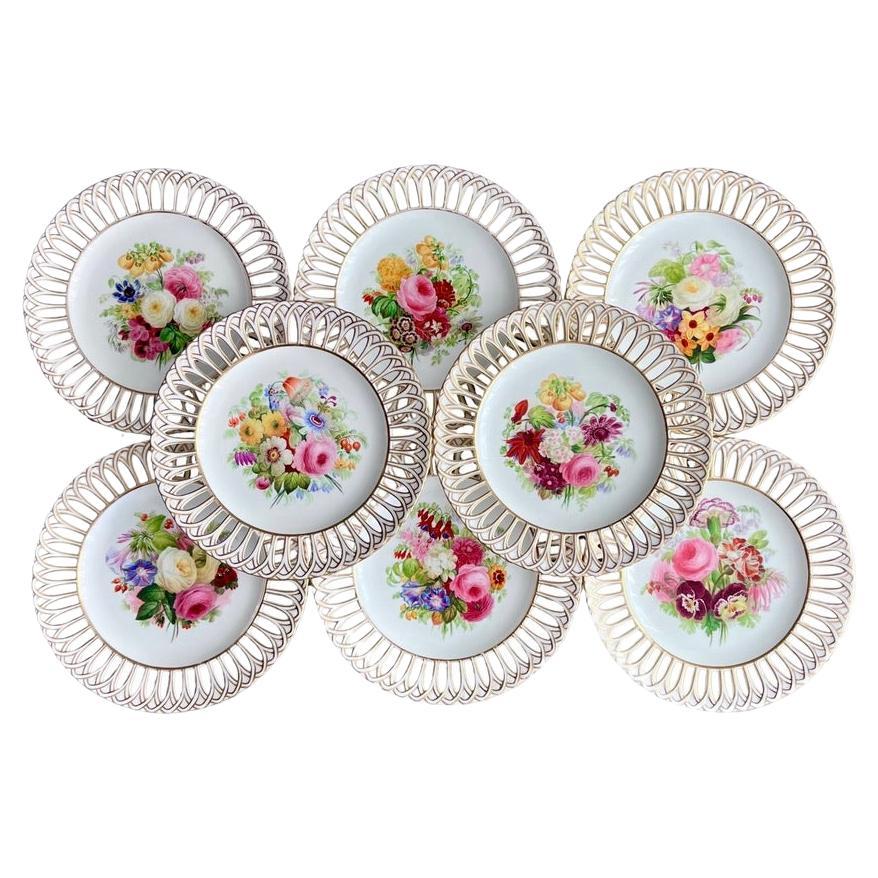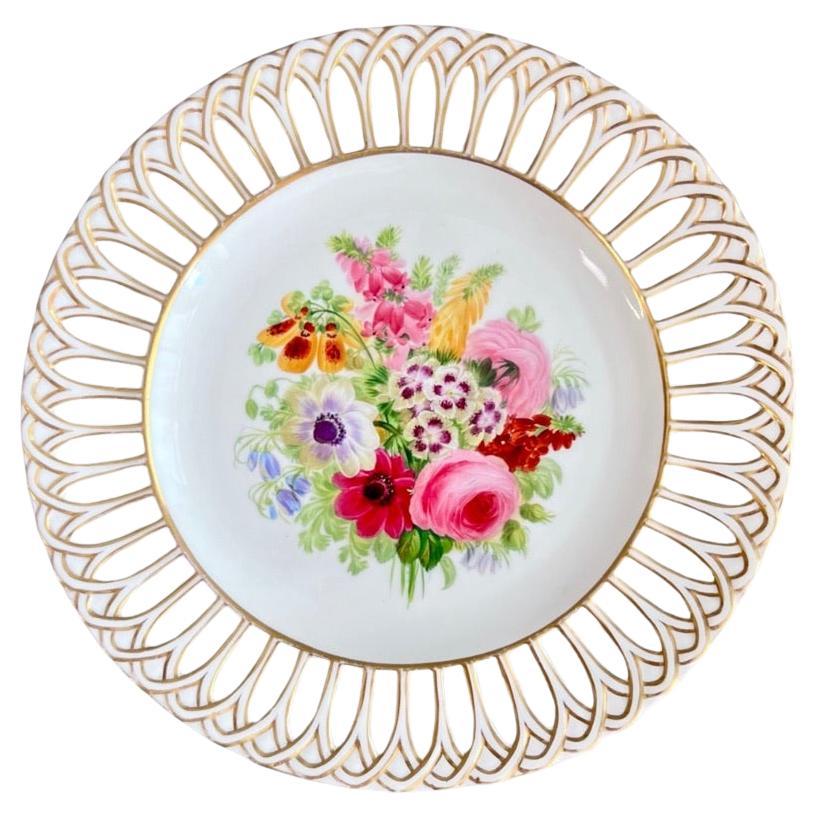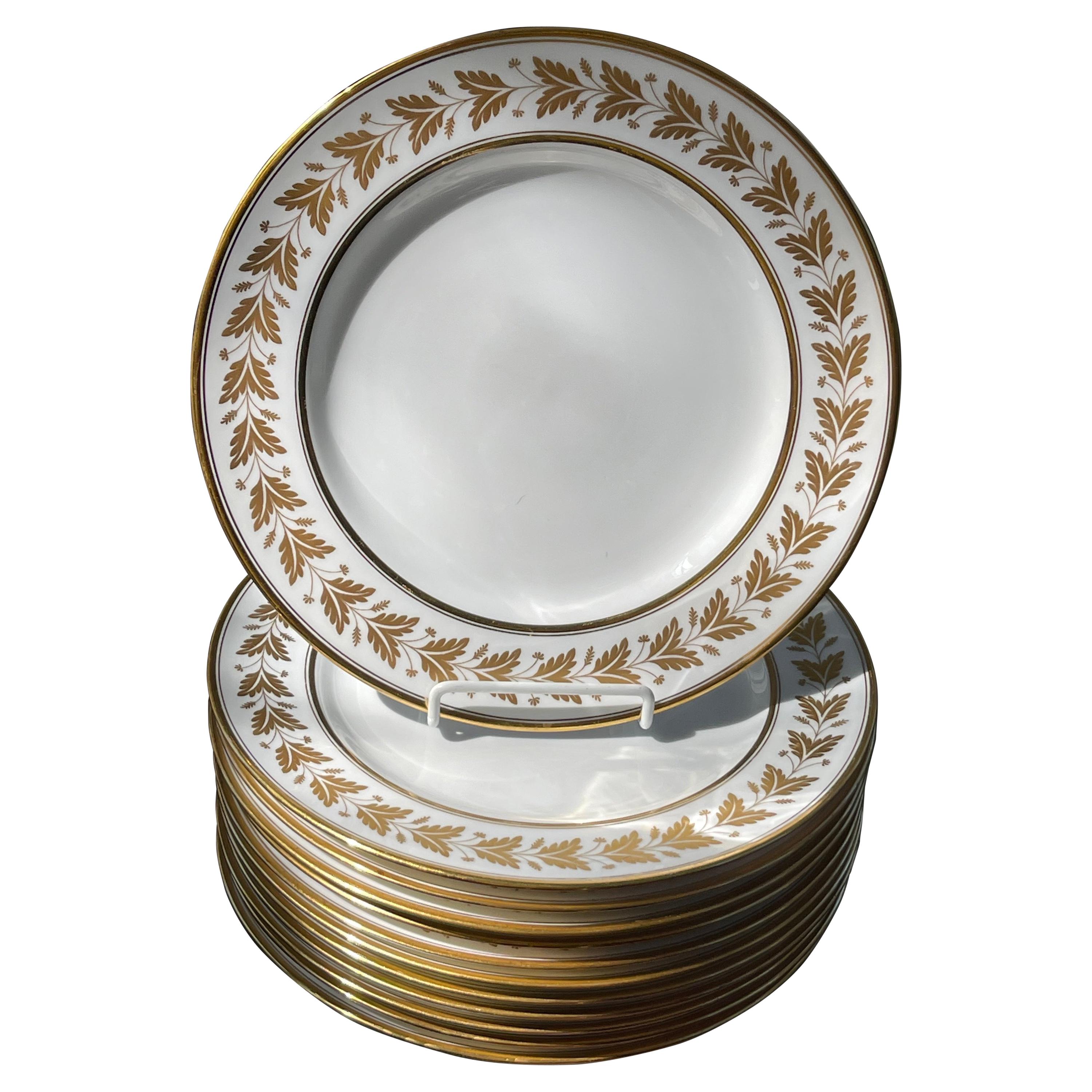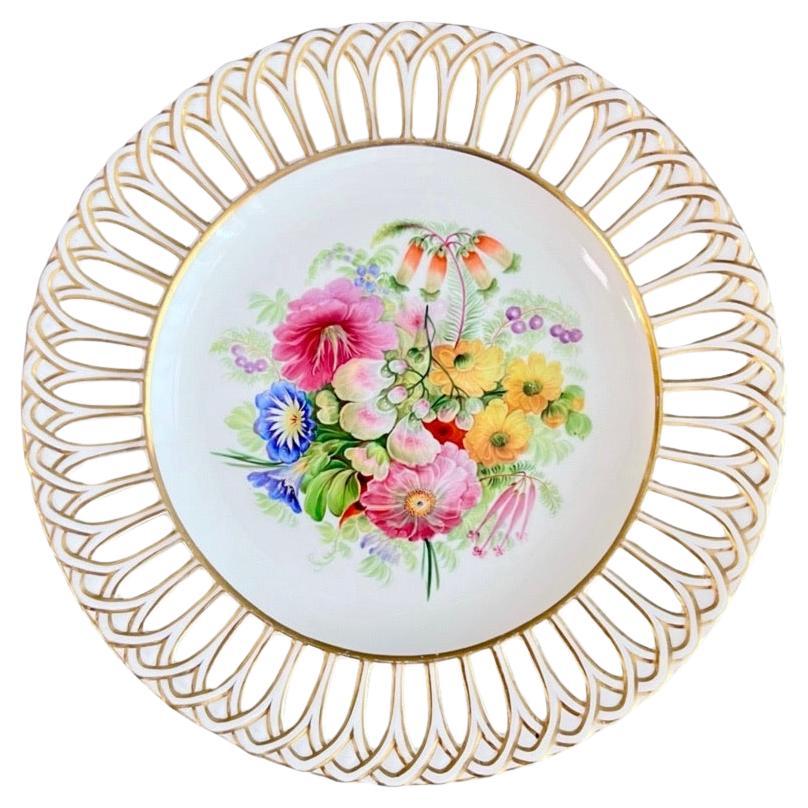Items Similar to Set of Three Large Blue and White Copeland Indian Tree Plates
Want more images or videos?
Request additional images or videos from the seller
1 of 6
Set of Three Large Blue and White Copeland Indian Tree Plates
About the Item
Set of three large blue and white Copeland Indian tree plates. Set of three, in unusual blue and white model of this pattern in a hard
glaze durable china made for the Middle Eastern market. Back is impress marked for Copeland with "T80" for 1880 and
Middle Eastern/Indian lettering in underglaze blue, England, 1880.
Measures: 10.25" D x 1" H.
- Creator:Copeland (Maker)
- Dimensions:Height: 1 in (2.54 cm)Diameter: 10.25 in (26.04 cm)
- Sold As:Set of 3
- Materials and Techniques:
- Place of Origin:
- Period:
- Date of Manufacture:circa 1880
- Condition:Wear consistent with age and use. no visible signs of wear; excellent antique condition for plates.
- Seller Location:New York, NY
- Reference Number:1stDibs: LU108424224853
About the Seller
4.9
Platinum Seller
These expertly vetted sellers are 1stDibs' most experienced sellers and are rated highest by our customers.
1stDibs seller since 2014
520 sales on 1stDibs
Typical response time: 2 hours
- ShippingRetrieving quote...Ships From: New York, NY
- Return PolicyA return for this item may be initiated within 3 days of delivery.
More From This SellerView All
- Set of Eight Blue and White Exeter PlatesBy Johnson BrothersLocated in New York, NYSet of eight of blue and white Exeter plates. Eight white English plates with blue lattice border in between floral reserves centering on one cherry blossom sprig. Classic and handsome blue and white plates. Markings "The Exeter" for "Johnson Bros England...Category
Early 20th Century English Dinner Plates
MaterialsCeramic
- Set of Six Blue and White Bird PlatesLocated in New York, NYSet of six blue and white bird plates. Set of six 20th century Sèvres style gilt and painted dinner plates with blue banded and gilt borders...Category
Late 20th Century European Dinner Plates
MaterialsPorcelain
- Set of Four Blue and White Bird PlatesLocated in New York, NYSet of four blue and white bird plates. Four contemporary coloured bird dishes featuring a loon, a rooster, a swan and a kinglet In blues, yellows and peach; a charming avian lunch plate set of four for use or display. Markings for Royal Stafford...Category
Late 20th Century English Dinner Plates
MaterialsCeramic
- Set of Five Italian Blue and White Floral PlatesLocated in New York, NYSet of five Italian blue and white floral plates. Five gilt-edged lobed soup plates with blue and brown floral decoration, Italy, circa 189...Category
Antique Late 19th Century Italian Dinner Plates
MaterialsPorcelain
- Set of Eight Blue and White Willow Basketweave PlatesBy CauldonLocated in New York, NYSet of eight blue and white willow basket weave plates. Blue and white willow plates with wide white banded basketweave border plates with outer blue rim...Category
Antique Late 19th Century English Dinner Plates
MaterialsPottery
- Set of Eight Blue and White Majolica Fish PlatesLocated in New York, NYSet of eight blue and white majolica fish plates. Pale blue and white ceramic plates featuring raised center fish in icy blue, surrounded by combe...Category
Vintage 1930s Italian Dinner Plates
MaterialsMajolica
You May Also Like
- Copeland Set of 8 plates, Reticulated, Sublime Flowers by Greatbatch, 1848By CopelandLocated in London, GBThis is a stunning set of 8 reticulated plates made by Copeland in 1848. Each plate is decorated with a unique sublimely painted flower arrangement by the artist Greatbatch. We have a second set of 8 of these plates available, as well as a few separate ones; please see separate listings. The Copeland factory was the third iteration of the famous Spode factory, after the "Copeland & Garrett" period which transitioned into the "Copeland" period in about 1833. The Spode/Copeland factory was one of the most prominent potteries right from the start of English porcelain production in the late 1700s to the demise of the industry in the 1960s and ultimate closure in the early 21st Century. In fact it was the founder Josiah Spode who was responsible for the recipe for bone china that made English china production so successful in the two centuries to come. Throughout all the changes, their items have always remained of exceptionally high quality and many of the designs have become iconic. These plates were potted in fine white bone china, the rims meticulously reticulated in the "Gothic" shape. Reticulation was very time consuming and difficult, and just this detail would have made these plates expensive. The sublimely painted flower arrangements in the centre were done by Greatbatch, one of the well-known floral artists working for Copeland. Greatbatch was active between 1845 and 1860, and worked together with his brother R. Greatbatch, who was a talented gilder. They exhibited at the Great Exhibition of 1851. These plates would have belonged to a sublimely expensive dessert service. They are all stamped with the small blue Copeland mark with interlocking C's, and painted in red with the pattern number 7913, dating it at the year 1848. Documentation: A plate of this service is shown on page 80 of Steven Smith's "Spode & Copeland: Over Two Hundred Years of Fine China and Porcelain...Category
Antique 1840s English Victorian Dinner Plates
MaterialsPorcelain
- Set of 8 Plates by Copeland, Reticulated, Sublime Flowers by Greatbatch, 1848By CopelandLocated in London, GBThis is a stunning set of 8 reticulated plates made by Copeland in 1848. Each plate is decorated with a unique sublimely painted flower arrangement by the artist Greatbatch. We have a second set of 8 of these plates available, as well as a few separate ones; please see separate listings. The Copeland factory was the third iteration of the famous Spode factory, after the "Copeland & Garrett" period which transitioned into the "Copeland" period in about 1833. The Spode/Copeland factory was one of the most prominent potteries right from the start of English porcelain production in the late 1700s to the demise of the industry in the 1960s and ultimate closure in the early 21st Century. In fact it was the founder Josiah Spode who was responsible for the recipe for bone china that made English china production so successful in the two centuries to come. Throughout all the changes, their items have always remained of exceptionally high quality and many of the designs have become iconic. These plates were potted in fine white bone china, the rims meticulously reticulated in the "Gothic" shape. Reticulation was very time consuming and difficult, and just this detail would have made these plates expensive. The sublimely painted flower arrangements in the centre were done by Greatbatch, one of the well-known floral artists working for Copeland. Greatbatch was active between 1845 and 1860, and worked together with his brother R. Greatbatch, who was a talented gilder. They exhibited at the Great Exhibition of 1851. These plates would have belonged to a sublimely expensive dessert service. They are all stamped with the small blue Copeland mark with interlocking C's, and painted in red with the pattern number 7913, dating it at the year 1848. Documentation: A plate of this service is shown on page 80 of Steven Smith's "Spode & Copeland: Over Two Hundred Years of Fine China and Porcelain...Category
Antique 1840s English Victorian Dinner Plates
MaterialsPorcelain
- Copeland Plate, Reticulated, Sublime Flowers by Greatbatch, 1848 (3)By CopelandLocated in London, GBThis is a beautiful plate made by Copeland in 1848. It is decorated with a sublimely painted flower arrangement by the artist Greatbatch. We have two sets of 8 of these plates available, as well as a few more separate ones; please see separate listings. The Copeland factory was the third iteration of the famous Spode factory, after the "Copeland & Garrett" period which transitioned into the "Copeland" period in about 1833. The Spode/Copeland factory was one of the most prominent potteries right from the start of English porcelain production in the late 1700s to the demise of the industry in the 1960s and ultimate closure in the early 21st Century. In fact it was the founder Josiah Spode who was responsible for the recipe for bone china that made English china production so successful in the two centuries to come. Throughout all the changes, their items have always remained of exceptionally high quality and many of the designs have become iconic. This plate was potted in fine white bone china, the rim meticulously reticulated in the "Gothic" shape. Reticulation was very time consuming and difficult, and just this detail would have made this plate expensive. The sublimely painted flower arrangement painted in the centre were done by Greatbatch, one of the well-known floral artists working for Copeland. Greatbatch was active between 1845 and 1860, and worked together with his brother R. Greatbatch, who was a talented gilder. They exhibited at the Great Exhibition of 1851. This plate would have belonged to a sublimely expensive dessert service. It is stamped with the small blue Copeland mark with interlocking C's, and painted in red with the pattern number 7913, dating it at the year 1848. Documentation: A plate of this service is shown on page 80 of Steven Smith's "Spode & Copeland: Over Two Hundred Years of Fine China and...Category
Antique 1840s English Victorian Dinner Plates
MaterialsPorcelain
- Set of Four English Copeland Dinner PlatesLocated in East Hampton, NYSet of Four English Copeland dinner plates with cobalt blue edges and gilt details. Retailed by Gilman Collamore.Category
20th Century Dinner Plates
MaterialsCeramic
- Set of 12 Spode Copeland Dinner PlatesBy Copeland SpodeLocated in New Haven, CTA set of 12 Spode Copeland porcelain dinner plates with a broad 24 carat gold laurel decorated border on white background.Category
20th Century English Neoclassical Dinner Plates
MaterialsPorcelain
- Copeland dessert Plate, Reticulated, Sublime Flowers by Greatbatch, 1848 (1)By CopelandLocated in London, GBThis is a beautiful plate made by Copeland in 1848. It is decorated with a sublimely painted flower arrangement by the artist Greatbatch. We have two sets of 8 of these plates available, as well as a few more separate ones; please see separate listings. The Copeland factory was the third iteration of the famous Spode factory, after the "Copeland & Garrett" period which transitioned into the "Copeland" period in about 1833. The Spode/Copeland factory was one of the most prominent potteries right from the start of English porcelain production in the late 1700s to the demise of the industry in the 1960s and ultimate closure in the early 21st Century. In fact it was the founder Josiah Spode who was responsible for the recipe for bone china that made English china production so successful in the two centuries to come. Throughout all the changes, their items have always remained of exceptionally high quality and many of the designs have become iconic. This plate was potted in fine white bone china, the rim meticulously reticulated in the "Gothic" shape. Reticulation was very time consuming and difficult, and just this detail would have made this plate expensive. The sublimely painted flower arrangement painted in the centre were done by Greatbatch, one of the well-known floral artists working for Copeland. Greatbatch was active between 1845 and 1860, and worked together with his brother R. Greatbatch, who was a talented gilder. They exhibited at the Great Exhibition of 1851. This plate would have belonged to a sublimely expensive dessert service. It is stamped with the small blue Copeland mark with interlocking C's, and painted in red with the pattern number 7913, dating it at the year 1848. Documentation: A plate of this service is shown on page 80 of Steven Smith's "Spode & Copeland: Over Two Hundred Years of Fine China and...Category
Antique 1840s English Victorian Dinner Plates
MaterialsPorcelain
Recently Viewed
View AllMore Ways To Browse
Antique Glass Trees
Antique Silver Tree
Antique Blue China Plates
Antique Blue Pattern Plates
Large Blue White Plate
Large Chinese Plates
China Large Plate
Indian Silver Antique
Antique Indian Silver Indian
Antique Indian Silver
Antique China Plate Sets
Antique China Plate Patterns
Large Blue And White Plates
Indian Plated Furniture
Antique China Dinner Plates
Blue And White Dinner Set
China Dinner Set
China Dinner Sets





